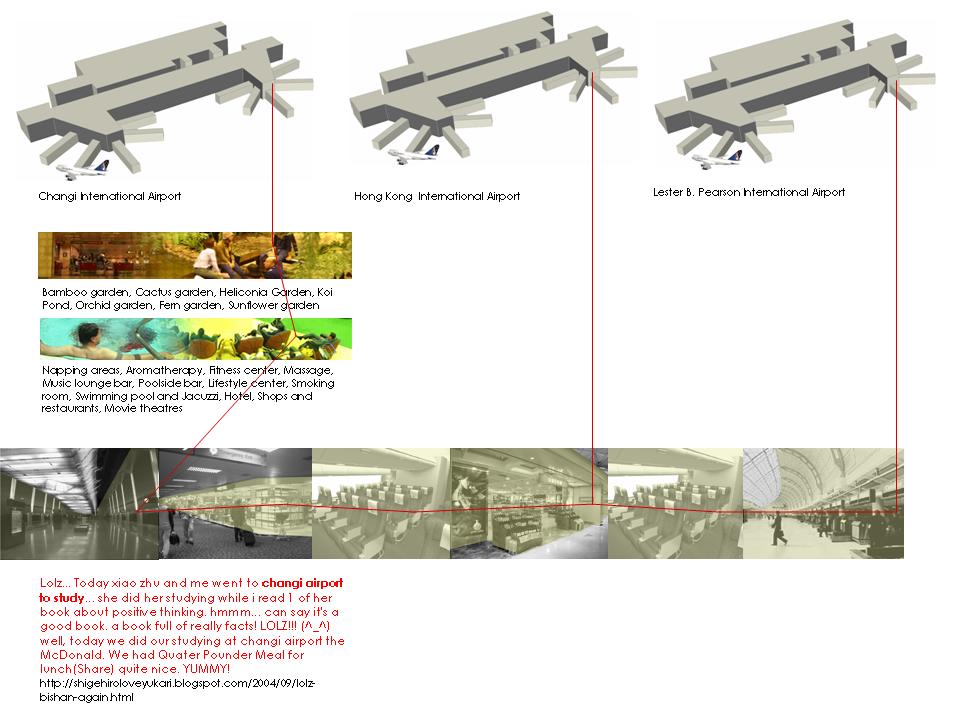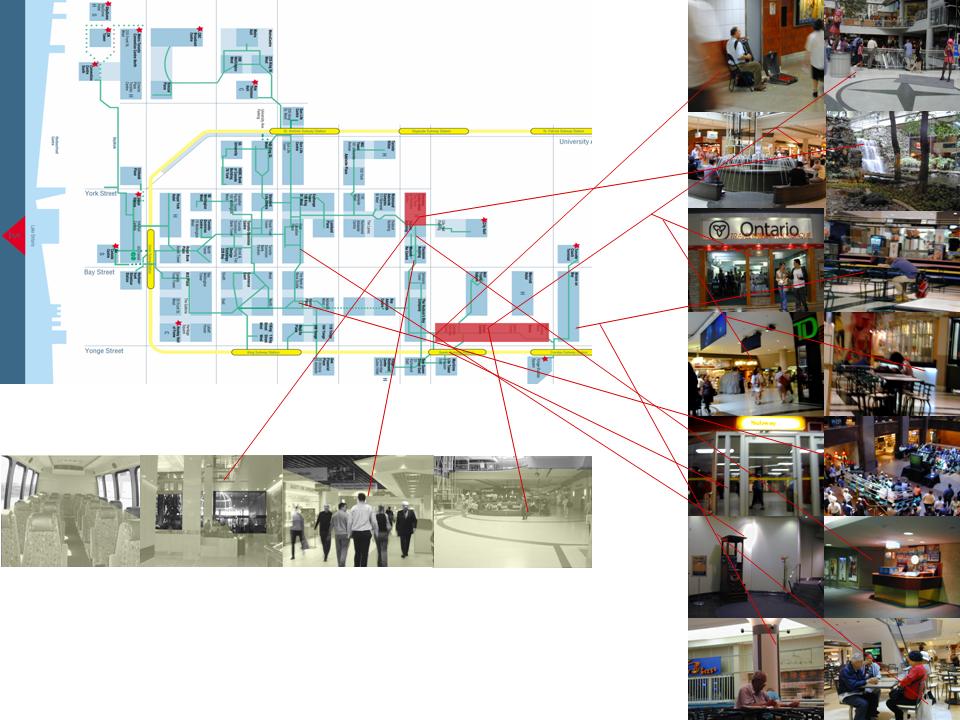|
Interior Urbanism consists of a series of speculative projects that explore the intriguing world of vast, continuous and interconnected interior spaces in contemporary cities that include mega structures, arcades, underground pedestrian walkways, above ground link bridges and infrastructural spaces. A hypothetical situation of traveling from Singapore to Toronto by remaining primarily within an interior or semi interior space. Starting from where I live, I can walk to the bus-stop using one of the many covered walkways connecting my apartment to the bus-stop. From there, the bus will take me to a multi-modal transportation hub that connects to the subway, which will in turn brings me to the airport. Traveling across national boundaries within the interior of a plane, and stopping over in Hong Kong, and arriving finally in Toronto, I can take the airport shuttle bus from the covered shuttle station at the Lester B. Pearson International Airport, and arrive at the Sheraton hotel. If I need to do business or visit some of the tourist sites in downtown Toronto, I can take the PATH, which is an underground network of passages that is linked to the Sheraton. Although I have taken an extreme position here, it is not an entirely implausible scenario. A particular feature of Singapore’s urban landscape is the amalgamation of public transportation, commercial, retail, residential and recreational facilities into a synergistic urban assemblage connected by covered link-ways. Contrary to the term infra as underneath or hidden, public infrastructures such as the subway stations, and intermodal transportation hubs are architectural statements in city-state. A significant amount of resources, and time are invested in the conceptualization, planning and integration of these infrastructures into the urban fabric. They are spatially and programmatically connected to a network of buildings and open spaces; forming hubs of intensity and social interaction for urban dwellers. The Changi Airport in Singapore has been consistently ranked among the best in the world by travelers. In 2010, it won the prestigious Skytrax World’s Best Airport Award, including the Best Airport Leisure Amenities and Best Airport Asia. However, unknown to most foreign visitors, the airport is also a highly popular destination for students. It is not unusual to find large groups of students in Singapore occupying the coffee shops, fast-food chains, and secluded, empty spaces in the city-state’s airport to study. For anyone unaccustomed to this ritual, it seems a rather strange habit on the part of the students to choose the airport as a place to study. Given the airport’s proximity to the city, and connected by a safe, efficient public transport systems, coupled by the availability of 24 hr food outlets, it is an obvious choice for the students. Besides converting the airport into study spaces, teenagers and residents also use the huge expanse of empty spaces to socialize. On weekends, one finds families at the viewing deck of the airport or patronizing the wide array of restaurants. Groups of teenagers congregate in quiet corners to talk, while retirees find the quiet viewing decks an ideal place to spend the weekday afternoon. Couples have also used the airport as a backdrop for their all important marriage day photography session. The PATH serves as surrogate public gathering space especially during winter, since it is more desirous to meet and conduct one’s daily affairs in a warm and comfortable environment during this time of the year. Besides these organised events, the PATH also sustains a plethora of other spontaneous and informal uses and activities. In the foodcourt beneath one of the office building, senior citizens gather daily to meet their friends, while retirees have their morning coffees and work on their crossword puzzles. The fountain in the Eaton centre, one of the major shopping complexes in the PATH network of spaces, is a favorite gathering place for mothers and their babies in strollers during late mornings. Several spaces, especially the empty foodcourts on weekends are used as study corners, while connecting passages become temporary skateboarding venues for teenagers. Comments are closed.
|
Archives
August 2023
Categories
All
|



 RSS Feed
RSS Feed
